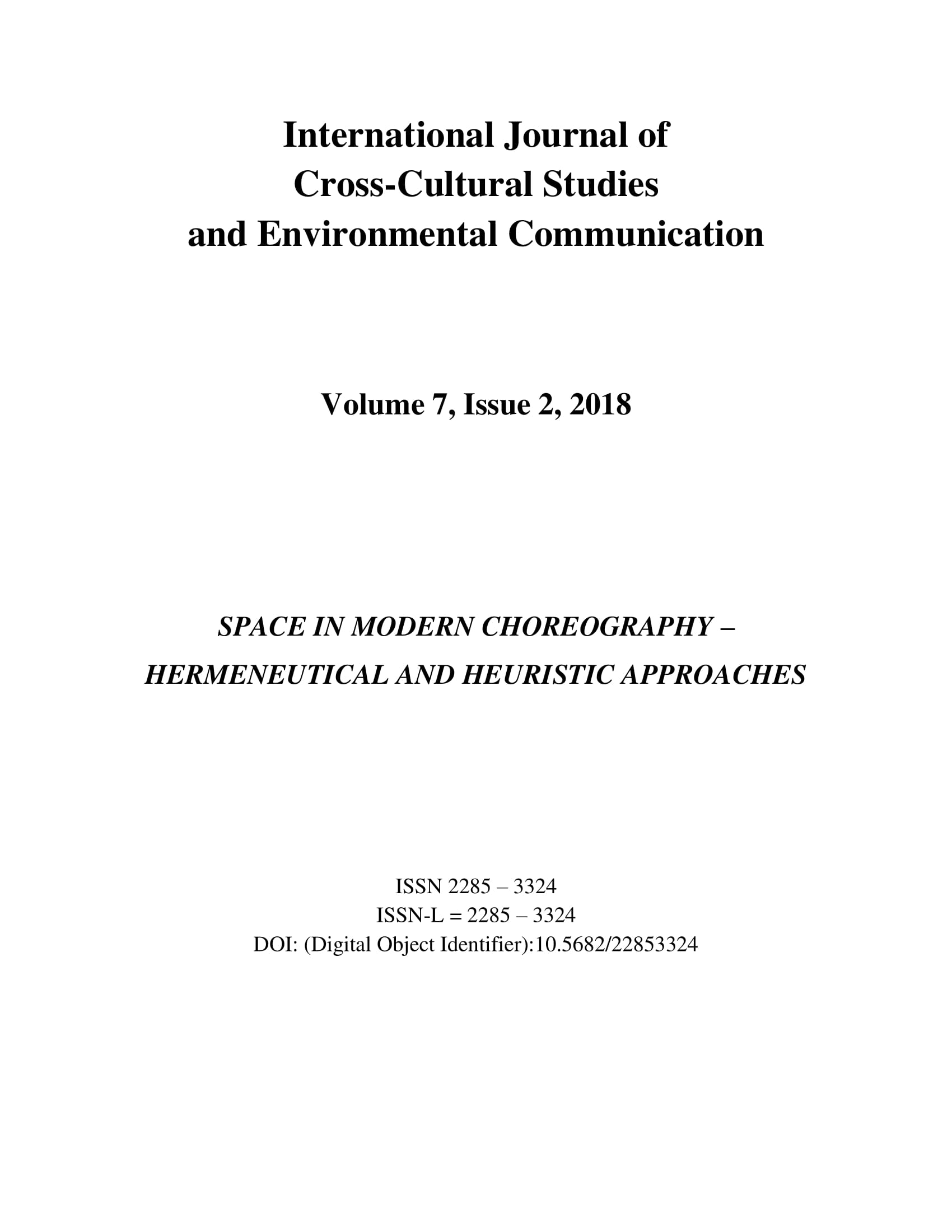SPATIAL CONFESSIONS ON GLOBALIZING SINGULARITY IN CONTEMPORARY DANCE
SPATIAL CONFESSIONS ON GLOBALIZING SINGULARITY IN CONTEMPORARY DANCE
Author(s): Gigi CăciuleanuSubject(s): Theatre, Dance, Performing Arts, Fine Arts / Performing Arts
Published by: Editura Universitară & ADI Publication
Keywords: singularity in contemporary dance; choreographic theater; spatiality; dialogic fabric of dance; confessions;
Summary/Abstract: In current paper I address the issue of relationship between singularity and spatiality in the art of dance. The meaning associated to singularity in dictionary - something different, singular, unique or atypical- paradoxically meets the definition of "singularity in the universe", a point in space that expands, with the event horizon problem (Oxford reference) and the transformation of space and time geometry. If taking the language as a model, a singularity in dance can result from almost endless possibilities of processing movements and gestures, aesthetics and meanings assigned to it. Practically, a singularity emerges from a very particular strain of factors that includes spatialization of "a process of getting inside the work". How singularity in dance transforms space, both as a "space of places" -container of institutions, structures, history and memory -, and as a "space of flows", related to international centers that support innovation, flexible interchanges and even episthemic models? For decades, the creation in contemporary dance is associated to a continuous quest for singularity. Its spatialization - internationalization or globalization-, was imagined to have the energy to cross various dimensions ranging from personal, professional and intellectual (small but very specific, particular) links, towards complex networks of institutions, and organizations, assembling logistics, means, frameworks, resources including political strategy.However, as a choreographer and dancer I approach spatiality rather in terms of universalization and I argue the quality of small ties of personal and artistic interchange in contemporary dance. A singularity can cross diverse backgrounds at various spatial scales, including the national dimension folded in the international and the global. When I first discussed the binomial singularity-spatiaity in a conference at the University of Strassbourg a decade ago, I decided to ground theoretical aspects in my own dance, and to mirror and encode them in a serie of confessions. I developed these narratives in lectures, workshops and seminars subsequently presented in various contexts from international dance and theater festivals, to universities, dance and theatre centers and cultural institutes. I look back to significant moments, events and environments, given their relevance for the issue of spatializing singularity, attempting first, to encode biographic information into a multifaceted rendering of memory and historicity, and second, by double encoding, to arouse a theoretical reflection on the rereading a biographic corpus. I relate this approach to the great opportunity that I had to observe and share challenging and inspiring experiences working with personalities like Pina Bausch, Rosella Hightower and Miriam Răducanu. Being a choreographer, dancer and dance teacher mainly based in France, I also portrayed the extraordinary phenomenon of contemporary French dance and the paradigm which allowed me to develop my own dance as choreographic theater, equivalent to playing a game between the interior and exterior gaze in multiple, diverse, sometimes very remote geographic sites, environments and countries from Europe, Asia, the Middle East or South America. I have worked in choreographic projects either in the official dance or in the independent dance, as well as in various interdisciplinary and interartistic projects, being guided by the French perspective on spatialization (and share) my dance along the horizon line – taken as a horizon of events - between Bucharest and Santiago.
Journal: International Journal of Cross-Cultural Studies and Environmental Communication
- Issue Year: 7/2018
- Issue No: 2
- Page Range: 18-31
- Page Count: 14
- Language: English

